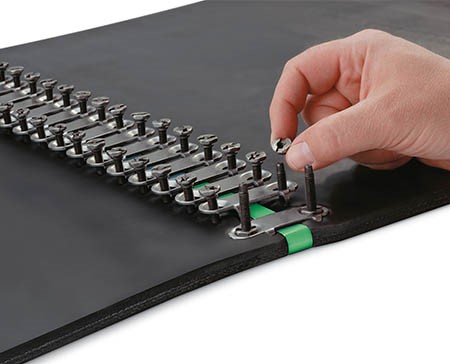Flexible Steel Lacing Co. (“Flexco”) filed a civil action against Conveyor Accessories (“CAI”) for trade dress infringement and unfair competition under the Lanham Act, Common Law, and Illinois Uniform Deceptive Trade Practices Act at the United States District Court for the Northern District of Illinois, Eastern Division (“District Court”). Flexco and CAI are competitors in the belt conveyor industry. The belt conveyors are used in several handling applications, for instance, transporting coal, moving groceries, etc. Many belt conveyor systems use an endless flexible rubber belt comprised of multiple high-strength rubber belt segments that are spliced together. In the suit before the district court, Flexco contended that the CAI infringed its registered and common law trade dress because CAI sells and promotes the conveyor belt fasteners with a design, which is confusingly similar to the product of Flexco. The CAI moved for the summary judgment and contended that Flexco’s trade dress is invalid because it is functional in nature. Flexco sought partial summary judgment on other grounds. Subsequently, both parties filed their reply. The district court granted the summary judgment in favor of CAI and held that the trade dress of Flexco was functional and hence it was invalid. Discontented with the verdict of the district court, Flexco filed this appeal at the United States Court of Appeals for the Seventh Circuit (“Appellate Court”) (Flexible Steel Lacing Co. v. Conveyor Accessories, Inc 955 F.3d 632 (7th Cir. 2020)) which affirmed the district court ruling.

Flexco argued that, despite the utility patent “undeniably describes how a ‘scalloped’ edge provides a better bite and a lower fastener profile,” it does so only in “reference to the fastener’s [two convex curves]” and not in terms of its trade dress, the center scallop. Its second contention was that the utility patent is not an evidence for functionality because it does not require a center scallop to accommodate an installation tool. However, the court disagreed with the contention that the utility patent refers solely to the two convex leading-edge fasteners to improve the bite and profile of the fastener. The Court also denied that the utilitarian functions disclosed by the patent are limited to the two-rivet fastener, thereby agreeing with the district court’s observation that review could not be limited to any particular fastener. Flexco further contended that the statement to the USPTO, the advertisement and the utility patent create factual issues related to the functionality of the trade dress that must be resolved by the jury. Nevertheless, the appellate court found these contentions and assertions contrary to the evidence obtained from Flexco’s internal testing, marketing material, utility patent, declarations given to USPTO because they demonstrated the utilitarian features of Flexco’s trade dress. The evidence of alternative designs was also found to be misapprehended by Flexco who argued that summary judgment was improper because of “conflicting evidence that CAI’s competing fastener has a flat bottomed, trapezoid shaped ‘notch’ and that its president confessed works just as good as Flexco’s curved center scallop” and “that any suitably sized space between the [two convex curves] of these competing fasteners, regardless of its shape, can perform the same function. The Court was of the opinion that as per the TrafFix, 532 U.S. at 33; Specialized Seating, Inc. v. Greenwich Indus., L.P., 616 F.3d 722, 726–27(7th Circuit, 2010),no plea of possibility of alternative design ought to be considered where functionality is established. It was further submitted by Flexco that the center scallop could be of any shape as long as it had the same area or more to displace the same amount of rubber. But the court pointed to the case ofGeorgia‐Pacific, 647 F.3d at 727 (quoting Door Sys., Inc. v. Pro‐Line Door Sys., Inc., 83 F.3d 169, 172 (7th Cir. 1996))wherein it specifically disagreed with this line of argument. In accordance with the reasoning provided in aforesaid judgement, the courtheld that there might be numerous alternative designs for the space between the two convex curves of the metal fastener.
Therefore, in view of all these rationales, the appellate court affirmed the summary judgment of the district court favoring CAI and held that the trademark of Flexco was functional and hence it was invalid.
Author: Saransh Chaturvedi (Advocate, LLM (IIT Kharagpur) – an associate at Khurana & Khurana, Advocates and IP Attorney, in case of any queries please contact/write back to us via email saransh@iiprd.com.



